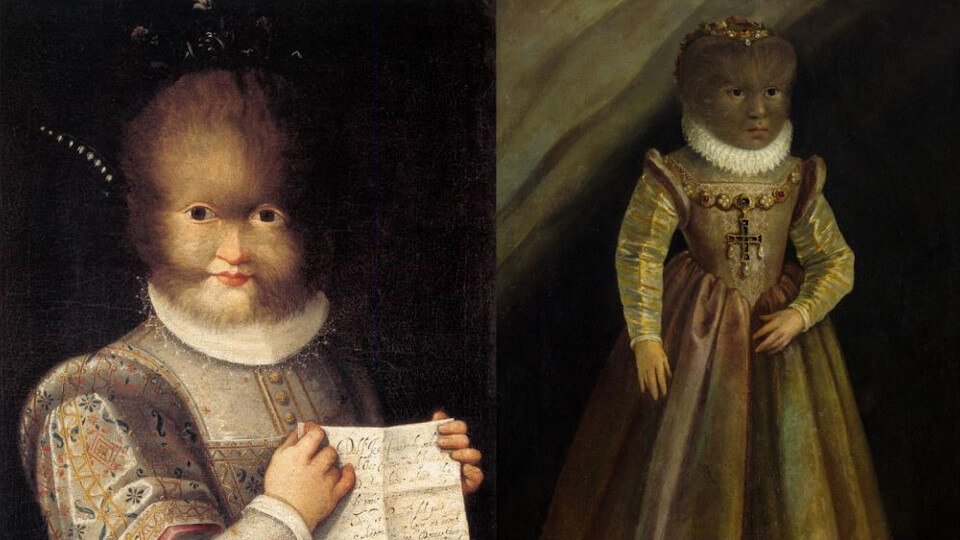We grew up singing their songs, we cosplayed their outfits, and we took pictures with them in “Happiest Place on Earth.” But, what if there is more than just a “happily ever after?” Fairytales were usually written with a hidden truth or a moral lesson and over the years it’s been candied and reduced to a Walt Disney feature. Behind the veil of smiles, prince charming, and being a princess, there’s a darker truth that lingers in a fairy tale and we can say this much: no one is laughing at the end. Don't believe me? Read on...
Snow White
Walt Disney’s empire was built on the back of his first featured fairytale film, Snow White and the Seven Dwarves. The movie was close to being shut down and believed to be destined for failure until a little bit of ingenuity, creativity, and imagination pushed the classic fairy tale into a movie sensation.
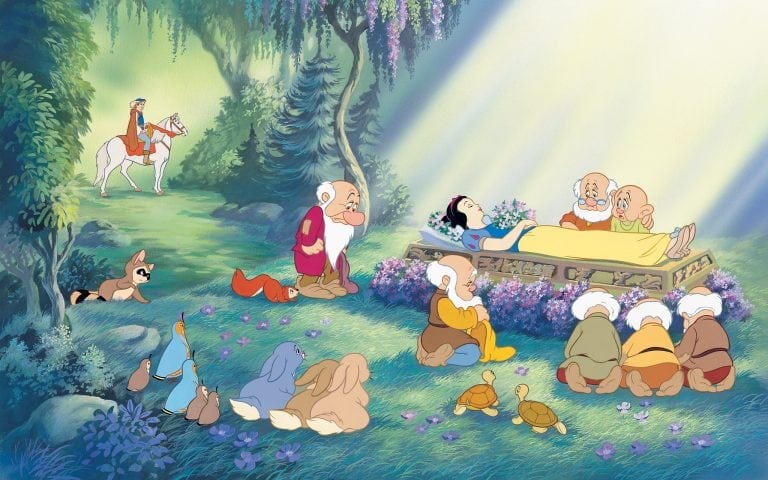
Walt brought Snow White to life complete with singing dwarves and the beginning of animated musicals. But what if Walt’s version of Snow White was nothing more than a sugarcoated dream? What if the real story had a much darker story than an innocent girl running from her stepmother’s wicked gaze? We all have an idea that the singing dwarves were a bit of a stretch. So, here’s what really went down.
Wo(man) in the hot-iron slippers
We already know the tidbits of Snow White. How it ends is what really raises eyebrows. When the stepmother thinks she’ll finally be fairest of them all, she discovers that the prince’s new bride (unknowing it was Snow White) was the fairest. The vain witch decides to pay a visit to the royals on their wedding day, hoping to target the new bride.

By the time she discovers Snow was the prince’s new bride, it was too late. The prince knew of the queen’s evil deeds and sentenced her to dance in hot-ironed slippers until she collapsed and died. No one bats an eye and the wedding continues joyfully and ceremoniously. Walt forgot to mention that bit, but you know, falling off a cliff is just as undesirable.
Bambi
If you love your mama, then you probably don’t want to watch Disney’s Bambi. A sweet coming-of-age story about a young fawn growing up and understanding the natural world is filled with friendship, love, and tragedy. But, is this version of Bambi true or is Disney, once again, sugar-coating the truth behind the young deer and his forest friends?
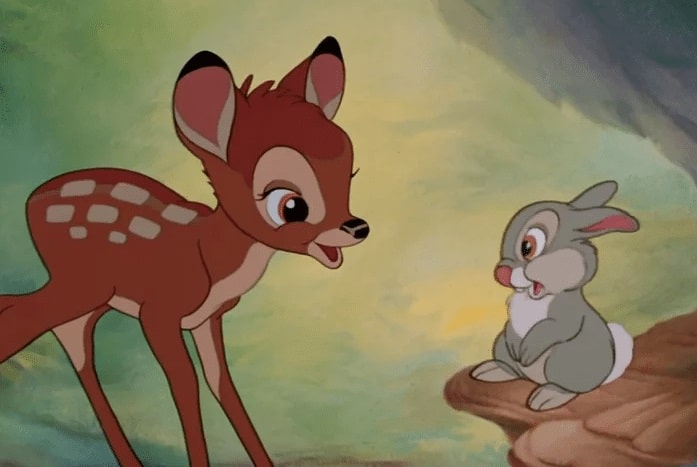
Sure, the film is catered for a young audience and, as it is (spoiler alert), killing Bambi’s mom was a bit of a stretch. It’s sad to say, her death wasn’t the only tragedy in the forest fantasy fairytale. And what’s more educational than understanding your place in the natural world.
Everyone you love dies
Walt was inspired by Felix Salten’s book about the little deer growing up in the forest. But, unlike Mr. Magic, Bambi’s mother was not the only victim who was taken by the hands of man. Several deer were shot and killed, including some of Bambi’s cousins. There was one incident where his cousin is captured by a hunter but is released into the wild.
He mistakenly trusts the man and when approaches another hunter. He is shot and killed. Dismay not though, the hunter gets what’s coming to him at the end, thus further touching how death is escapable to no one. To say the least, the book was about the harsh realities of forest life when you’re an herbivore with no other defense but to RUN!
Beauty and the Beast
A fan favorite for most, Beauty and the Beast has stood the test of time as one of the most beloved fairytales with a sympathetic message: beauty more than skin deep. It’s not about looks, but character and virtue. But of course, even this fairytale we know so well has been tweaked over the years.
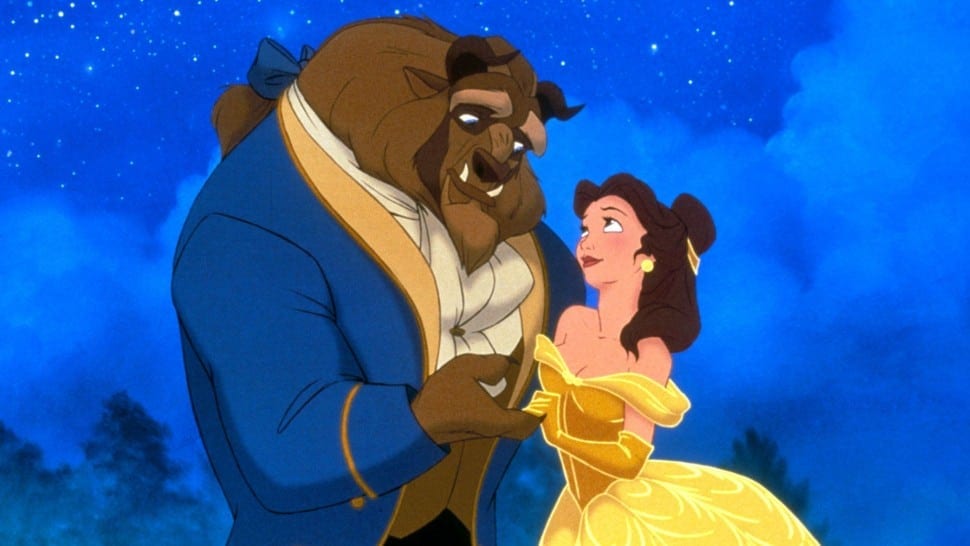
For instance, though the original story was written by Gabriella-Suzanne Barbot de Villeneuve in 1756, the story stems farther back in French aristocracy. “Beauty and the Beast,” or “La Belle et la Bete” may have been based on a true story, a story with redemption, love, and tragedy. There was a Belle, and you best believe she loved a “beast.”
He married a woman chosen by the queen
Found in the Canary Island in the 1500s, Petrus Gonsalvus was born with a rare genetic condition called hypertrichosis, or abnormal hair growth that consumed the entirety of his body. Captured and caged, Petrus was given as a gift to the king of France, Henry II. Luckily, the king was more intrigued in educating Petrus than keeping him like a wild animal; he did not believe Petrus was an animal, though many in his court believed so.
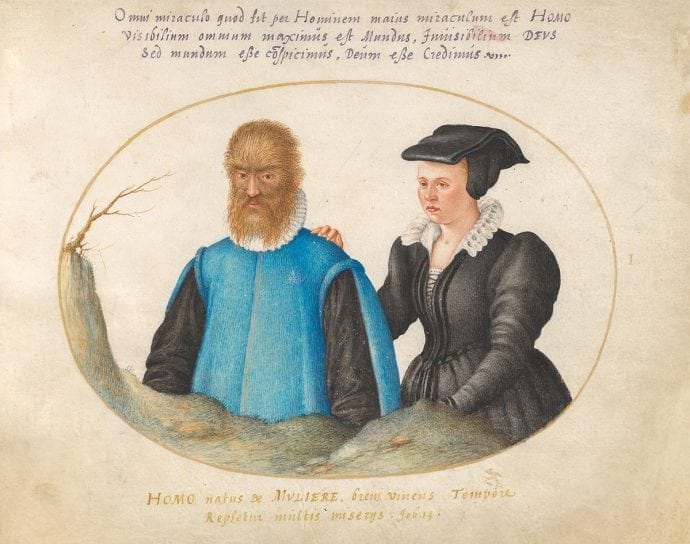
The king gave him the education of a nobleman, and the beast learned 3 languages in the process. Though Petrus was given a second chance in life, the king of France died, leaving him to be the property of his widow, Catherine de’ Medici. She had plans for the so-called “beast man.”
Their children were given as gifts
Catherine de’ Medici did not share the exact same, compassionate sentiments as her husband. Instead, she wanted to experiment with Petro. She wanted to see if Petrus was capable of marriage and conceiving children. Catherine decided to hook up Petrus with the daughter of the palace servants to find out. Terrified of her new husband in the beginning, she eventually grew fond of him.
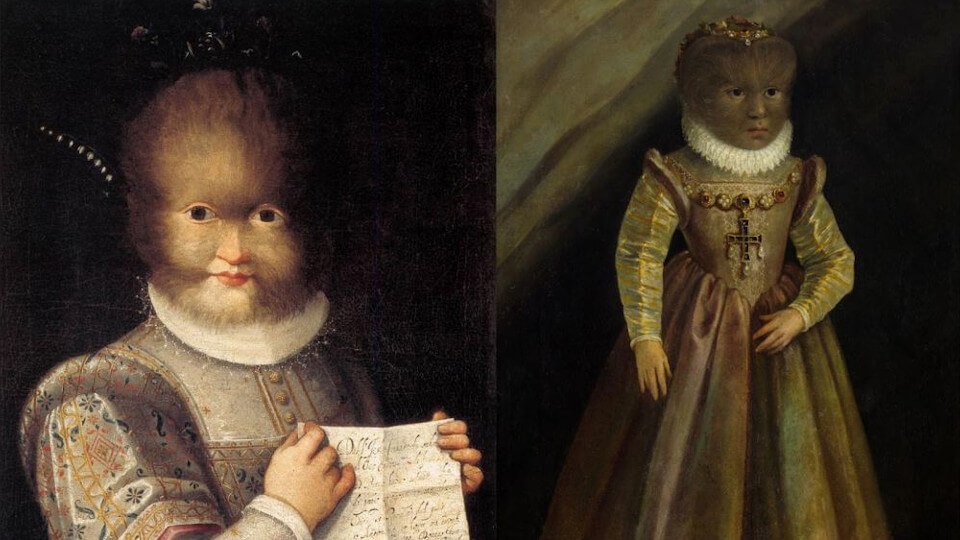
The two married and evidently had seven children, four of which, had the same condition as their father. Catherine was delighted to see more “beasties” and saw them as a symbol of nobility. Unfortunately, Petrus and his wife didn’t exactly have a happy ending. Owned by the queen, Catherine exploited the children who had the rare genetic condition and gifted them to other noble courts throughout Europe.
Alice in Wonderland
To say the least, “Alice in Wonderland” has been a fan-favorite for anyone 5 and up. Who can blame them? It’s about a girl who falls down a rabbit hole and finds herself in this nonsensical world that is totally bonkers. Disney did a beautiful job with his rendition of color and following the young girl’s journey from the mundane to the extraordinary.
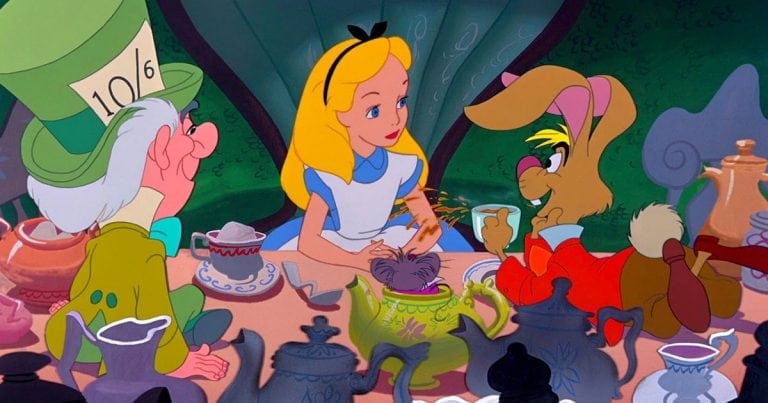
You know what else is bonkers? That people have developed their theories over the decades about what the story is really about. Talking rabbits, vanishing cats, flamingo mallets, and animated playing cards? Lewis Caroll had to be on something, right? Over the years, people have developed a Freudian idea of what the novel may be about. However, it all may just be a case of over speculation.
The meaning changed under social circumstances
It’s hinted that Alice was inspired by seven-year-old Alice Liddell, the daughter of Dean Henry Liddell from Christ Church Oxford. The story was believed to be purely innocent, however, as decades passed, that are hints that narcotics aided the imaginative writer to conceive the fantasy world traversed by Alice. Opiates were on the rage during the novel’s conception, which stimulated hallucinogenic properties.

The thought wouldn’t have crossed anybody’s mind if not for Jefferson Airplane’s 1967 psychedelic anthem White Rabbit. The song references the magical tail, twisting it to sound like an altered state of consciousness. However, it may have been fueled by a drug-fueled culture that resonated with the 1960s, 1970s, and 1980s. The story even brought Carroll’s sexuality into question. Though abstinent, people began to realize that Caroll’s affinity for children seemed a little questionable.
Misinterpreting the message
Speculation surrounding Caroll’s life clouded his novel, however, those interpretations didn’t arise until the circumstances of time and society changed and more scholars continue to dissect a possible hidden meaning behind the young girl whose world was flipped upside down…literally.
Could it be that maybe, just maybe, the novel is just what it’s meant to be? A silly story meant to fit the silly and fragmented imagination of children? It could possibly well be. Nevertheless, Alice in Wonderland continues to be a childhood, adolescent, and adult favorite. Whether you’re into vintage classics or a Victorian Goth.
Pinocchio
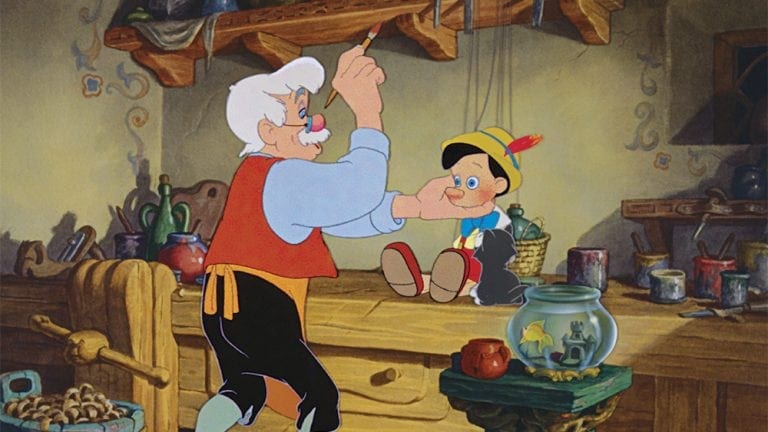
Who can forget this heart-wrenching tale about a puppet who was brought to life by his father’s love? If you don’t know about Disney’s take on “Pinocchio,” the story focuses on a puppet who desired to become a real boy with the help of his conscious, speaking cricket, Jiminy. To do so, he must prove that he is honest, selfless, brave, and virtuous to the lovely blue fairy.
He gets his wish when he saves his father after being swallowed by a giant whale named El Monstro. Pinocchio was turned into a real boy and lived happily ever after with his creator, his kitten Figaro, and beloved goldfish Clio. Nice story isn’t it? Wait until you hear the real story behind Pinocchio, it pales the Disney version its dark like a cowboy’s pot of coffee.
He never became a “real” boy
In the original story written by Carlo Collodi, Pinocchio was not the gullible puppet with a heart of gold. Instead, the real Pinocchio was a parent’s worst nightmare. Pinocchio was a complete delinquent, and often stole, and caused nothing but trouble in his village. His father even calls him a “wretched lad.” More on the Chuckie end of the spectrum than Buzz Lightyear.
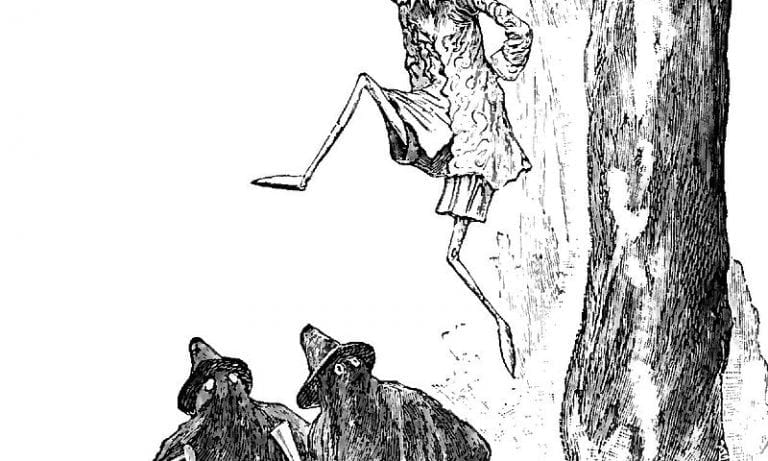
He was even responsible for — get this — Jiminy Cricket’s death. NOOOO!!! Not a cricket! Trying his best to steer the puppet boy home, his suggestions irked Pinocchio. As a result, Pinocchio tosses a mallet at his little cricket friend and bludgeoned him. To his father’s best efforts, he could not control his creation. Then one day, Pinocchio meets a cat and fox after a series of consequential events that eventually takes a dark turn. The two animals take Pinocchio and hang him from a willow tree.
Jungle Book
Far from the man village and in the wolf’s den lives the little Mowgli, the man-cub of the Indian forest. When word goes around that the vicious Sher Khan, the man-eating tiger, in on the prowl, Mowgli is forced from his home, escorted by his friend, Bagheera the black panther, and the comic Baloo the Bear.
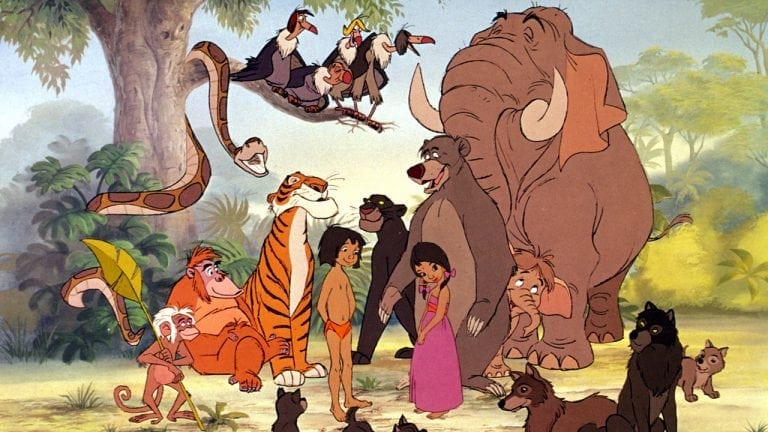
Throw in some iconic sing-a-longs and King Louis asking for man’s red flower and we have a childhood animated story that will be passed down through generations. But, sorry to say, The Jungle Book is not as awesome as Disney makes it out to be. Like all fairy tales, The Jungle Book does not escape the dark layers that make a fairytale so great. Rudyard Kipling story is a doozy.
Mowgli burns down a village
Rudyard Kipling wrote The Jungle Book in 1894, and back then, children’s books weren’t as censored as they are today. Some parents freak out about some Disney movies today that gave no hint their accusations. Merida from Brave comes to mind when some parents thought Merida was a lesbian tomboy because she refused to marry any of the suitors that her mother chose for her.

Parents didn’t even bat an eyelash with Kipling’s story. After killing Shere Khan, Mowgli discovers that his human parents were captured by farmers and as a result, destroys the village. He asked his wolf pack to help him do it. After the event, Mowgli is adopted by a village governed by the English where he lives happily after (?).
Rapunzel
Disney’s Tangled, we’ll admit, was a clever retelling of a kidnapped princess stuck in a tower. A story about a young woman wanting to explore the world could be related to any adolescent wanting to fly the coop and leave the nest into the unknown. Add a dashing, devilish rogue as the love interest a mischief horse and chameleon, a frying pan, and you have a classic Disney movie.
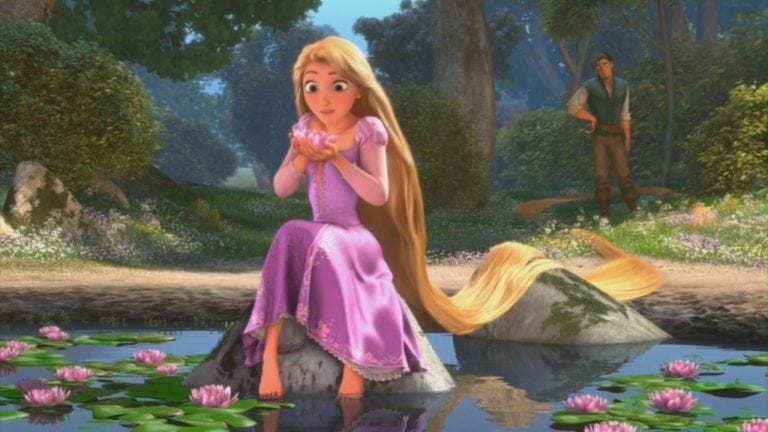
For those of you know who think they know the real story about Rapunzel, you’re about to get the shock of a lifetime. For instance, did you know that Rapunzel was not a princess but the daughter of a peddler? Yup. When the couple was expecting their first child, the mother had a hard-core craving for lettuce, so the father saw a garden teeming with lettuce. Little did he know he was about to make a big mistake.
She was an outcast
The garden belonged to a witch and when the witch discovers the husband’s thieving ways, the witch punishes him and forces them to surrender his child once it was born. He had no choice and gave up their daughter to the wicked witch who locked up the child in a tower. Add a dashing, devilish rogue as the love interest a mischief horse and chameleon, a frying pan, and you have a classic Disney movie.
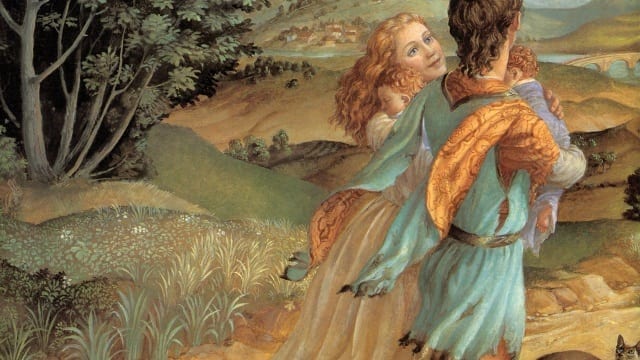
Fast forward and Rapunzel becomes this gorgeous young thing with a beautiful voice (I suppose they all do) and long hair. One day, the king’s son hears her song and calls for Rapunzel to let down her hair. When Rapunzel meets the prince, she freaks out, but the prince sweet-talks Rapunzel and asks to take him as a husband (oh, she took him as her husband all right). Least to say, Rapunzel gets knocked up and once the witch finds out about the prince, she blinds them and casts the two into the desert. Thankfully Rapunzel’s tears healed the prince’s eyesight and they returned to his kingdom where they lived happily ever after.
The Little Mermaid
We all know how this story goes. Ariel is a sixteen-year-old who believes she is old enough to make her own decisions. When she meets a dark, tall, and handsome Prince Erick, she falls in love and willingly trades her voice for a pair of human legs. For what it’s worth, Disney did well make Hans Christian Anderson’s fairytale PG.

Though we would all love to believe that Ariel does, in fact, live happily ever after and marries the prince in a puffy 1980s-style bridal gown, this little mermaid has a much more tragic ending. In Anderson’s tale, God has a stronger presence in the story. In the original tale, the mermaid doesn’t have a soul, and when mermaids die, they don’t get to heaven. Everything in the Disney retelling is pretty much on the nose up until you meet the sea witch.
She turns into seafoam
The witch warned the mermaid that unless she obtained a piece of the prince’s soul, she cannot be a true human being, and would turn to sea foam. Just as the story proposed, in exchange for a pair of feet, the little mermaid surrendered her voice and signed her life away. When she gets to dry land, she was horrified to discover that taking a step was like walking on glass. She succeeds in meeting the prince, but the little mermaid was friend zoned.
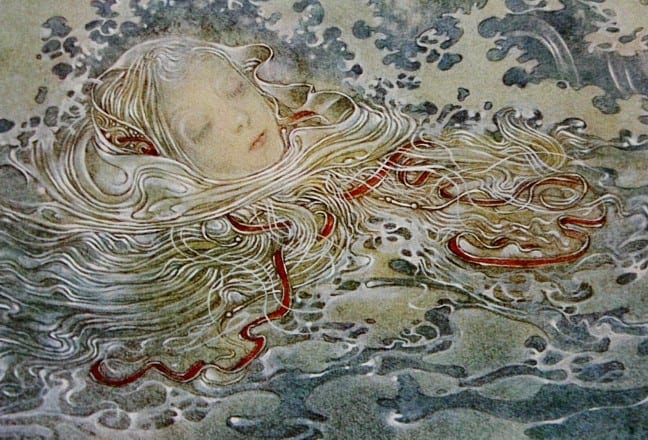
The prince ends up marrying another woman. She had the option to kill the prince to take his heart and soul, but the mermaid loved him so much that she sacrificed her own life for his happiness. Deep in grief, the mermaid returned to the sea and turned to sea foam. There is a “happy ending” though. God saw the mermaids sacrifice and gave her a soul, allowing her to ascend to heaven. Way to think ahead, Ariel
Hercules
Okay, so this one is a bit of a stretch. Not everyone knows the real story behind Hercules (he put the glad in gladiator after all). A part of the 1990s Disney renaissance era, Hercules is about the son of Hera and Zeus who was kidnapped by Hade’s henchmen to make him mortal in hopes of killing him for a great evil scheme.

For those who watched the movie, this obviously doesn’t happen, and Hades’s plan was foiled. The inconsistencies of the true legend of Hercules and the Disney version does not, unsurprisingly, match. One thing Disney did get right is his love for a woman named Megara. And like all Greek tales, theirs ends in tragedy. Hercules’s story begins with a very jealous Hera, queen of the gods. It’s no secret that Zeus was, well, the “king” of the many gods in Greek mythology (in more ways then one, if you catch our drift). As a result of being so charming, he was also very fruitful and had multiple offspring who were born from his trysts.
She made him do the unthinkable
One of his children was Hercules. Of course, Hera was fuming, but instead of taking it out on her husband, she took it out on the strong-man Herc. Marrying Megara, who was the daughter of the King of Thebes, they seemed to have a happy domestic life. They had children and were pretty normal in terms of a traditional family.
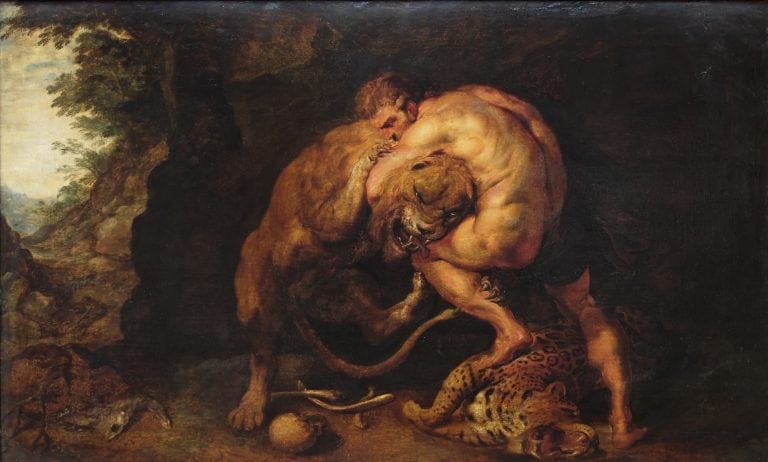
Then there’s Hera. In a fit of rage, she makes Hercules mad which forces him to murder his wife and three sons. He was so destructive that Athena had to knock him out with a stone. When he came too, he saw what he had done and was tormented with grief. He was going to take his own life, but his cousin Theseus convinced him to see the Oracle of Delphi who then tasked him with the Twelve Labors to serve his divine “time,” so to speak.
The Hunchback of Notre Dame
Side note, Disney’s Hunchback of Notre Dame is beautiful, okay? The songs, the storyline, Demi Moore…all of it. The story follows an outcast named Quasimodo whose mother was chased down and indirectly killed by the story’s antagonist Claude Frollo and forced to live in Notre Dame Cathedral.

Befriended by gargoyles and a beautiful green-eyed gypsy, and handsome crusader, Quasimodo and his friends vanquish Frollo; stopping the imprisonment and torture of the gypsy people. If only the triumphant story was true. Victor Hugo’s novel has a different spin on the fate of the beautiful gypsy girl. Hint: it’s not a happy ending. In fact, you’ll prefer the Disney version compared to the real story around the poor shut-in of the bell tower.
They turn to dust
To say the least, Quasimodo’s story is well-matched with Disney’s story line, except for one tiny detail. Esmeralda dies. In the original story, Quasimodo was responsible for Esmeralda’s capture. Once the free-spirited gypsy was in the hands of the authorities, she was then taken to the gallows where she was hanged. Dang, Quasi sold her out!
There was no dramatic scene where the hunchback breaks free from his chains and swoops down to save the girl. There is just grief and a childhood letdown. Torn by her death, Quasi goes to Esmeralda’s grave where he laments for days without eating. He dies on her grave and is buried with the one person who ever showed him an ounce of kindness. When the grave was exhumed, the Undertaker tried to pry their bones apart, but in doing so, turned their bones to dust and ash.
The Snow Queen
Yes, the movie is called Frozen, but the Hans Christian Anderson tale was called The Snow Queen. Though the Disney film focused the movie on the strength of sisterly love, it’s a far cry from what the original plot stemmed from. Don’t freak out, though. There is a snow queen, but her name was not Elsa and she was not the main character’s sister.
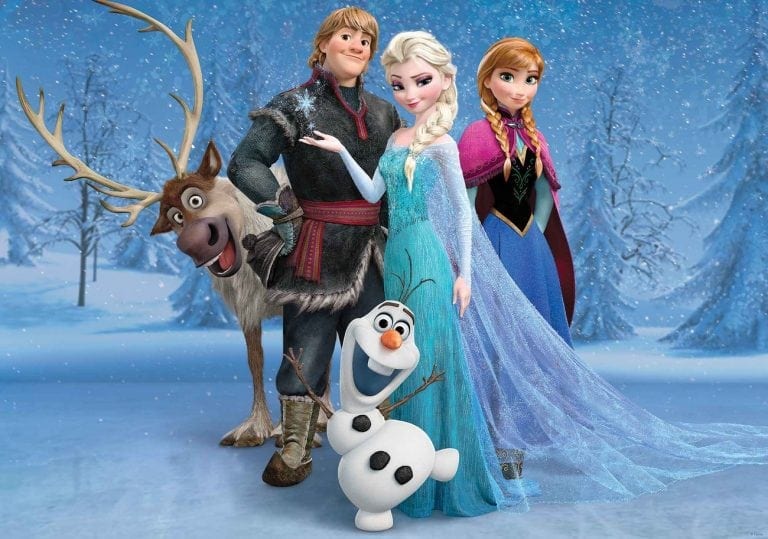
Let’s instead wipe this storyline clean and start from the beginning. The story starts with demons. In their possession, they carry a mirror that sees all the evil in man. It shatters and sprinkles over the eyes of men and women in a small village. The two main characters, Kay and Gerda, are victims of such a plight.
She burst into tears
Kay is abducted by the Snow Queen; a woman made entirely made of ice and is taken to her castle as her pet. Thought dead, Gerda wanders the frozen tundra looking for Kay’s body when she met a woman who told her that her friend was still alive and well. Gerda nearly freezes to death trying to find the Snow Queen’s castle.
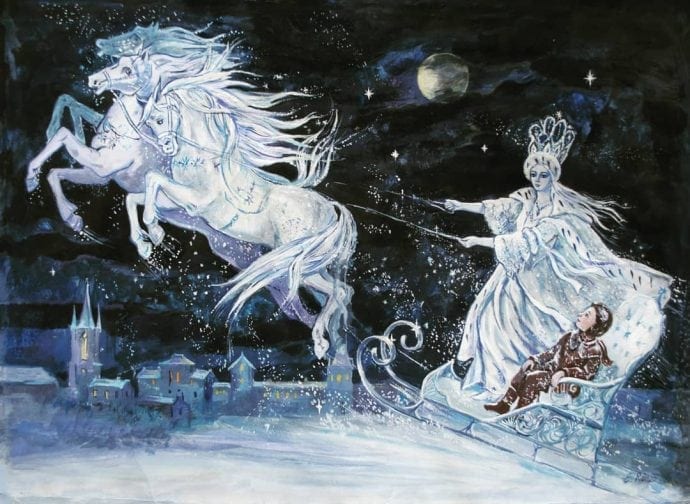
When she finally discovers the palace, she finds Kay inside, and is frozen blue with apathy and, basically, negativity. So, Gerda did the only thing a woman could do in a 19th century fairytale…she burst into tears. Her warm tears of purity brought the boy back to the present, filling his heart with warmth and joy and returns to his village with Gerda in hand. Not a sad story, but a completely different tale compared to the Disney version.
Pocahontas
In elementary school, you would be lucky to learn a thing or two about the early establishment of Jamestown, Virginia; the story about how the English came to the new world and began to establish their colonies that will one day be the foundation of the US. What they don’t teach you in school are the relationships between the Native American people and the first settlers who arrived in the New World.

However, none is more famous than the story of Pocahontas and her love for John Smith. Disney amped up a sugary version of a young Native American woman who was curious about the arriving settlers, all the while, trying her best to bridge peace between the newcomers and her people. But did you know that the Disney version is, well, wrong? Not a surprise. In fact, most of the historical accounts between John Smith and Pocahontas were most likely made up.
She was only 11
Pocahontas was not her name, her name was Amonute and went by the name of Matoaka and was the favorite daughter of Chief Powhatan. The name Pocahontas was a nickname people referred her as, which means “playful one,” or “misbehaved child,” and is speculated that she was no more than 11 years old.
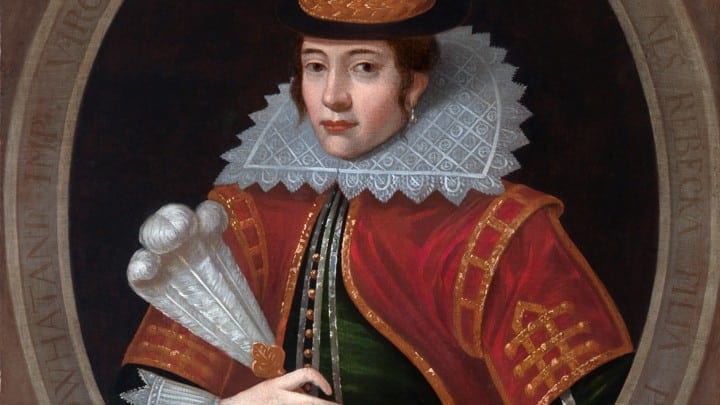
When settlers came to the New World, John Smith was among the settlers. There was some serious tensions between the settlers and Pocahontas’s community. It is said that in 1613, Pocahontas was kidnapped by the same settlers in exchange for imprisoned white settlers. Unfortunately, only half were returned, and Pocahontas was whisked away to England where she converted to Christianity, renamed herself Rebecca, and married an Englishman named John Rolf. John Smith’s account of Pocahontas saving him might have been used as a propaganda to get investors to send aid to the Virginia colonies.
The Frog Prince
Out of all the Disney retellings, The Princess and the Frog has to be the most pleasant adaptation. We have a strong female character who is independent, ambitious, and motivated who is goal oriented and works hard for her future. If that isn’t a great female role model in a Disney movie, I don’t know what is.

The story of a young woman living in the 1920s in New Orleans is one to surely be remembered. Voodoo magic along with a crocodile and firefly sidekick and you have a feature film set for success. But is this how the real story of the Princess and the Frog came down? Or is it all just another pretty fairytale?
She dropped the ball on her
There’s nothing to concern yourselves about how this fairytale pans out, but it is vastly different from the Disney version we know and love. Instead of the story being set in New Orleans during the 1920s, we have Germanic Europe and a very spoiled princess. While playing with a small golden ball, she drops it in a nearby pond and is completely grief-stricken that she lost one her favorite toys.
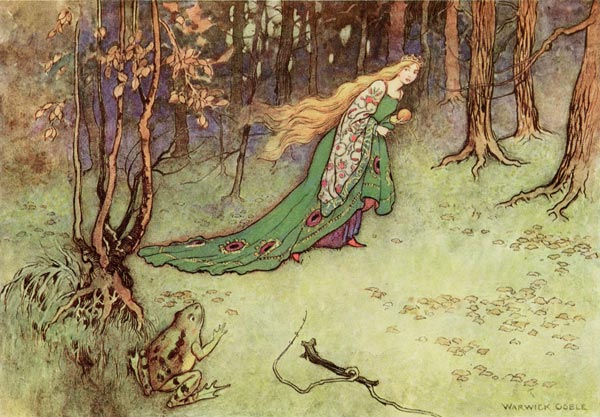
An opportunistic frog hears the princess’s cries and offers to retrieve her ball under the conditions that she let him live with him, eat from her plate, and sleep in her bed. The princess hurriedly agrees, and the frog does as they agreed and fetches the princess’s ball. Of course, the princess forgets about the entire deal. But the frog didn’t let her off that easy.
He was a moocher
The frog did get exactly as was promised to him: he lived in the castle, ate directly from her plate, and slept in her bed. He took advantage of the royals and was even a pervert. He had the audacity to demand a kiss from her while sleeping on her pillow! The princess got so fed up with the annoying frog that she threw him across the room where he splats against a wall.
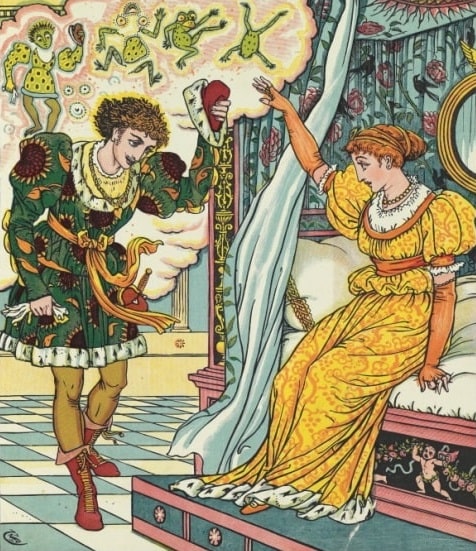
Realizing what a jerk he was, the frog turned into a prince. There was no kiss, just a swift pitch to the nearest brick wall. Oh, and the princess did not marry him. The prince was so jaded by her rejection that he spread nasty rumors about her and returned to his kingdom.
Sleeping Beauty
The “Once Upon a Dream’ romance about a young girl who finds her prince charming in an isolated forest has been a family favorite since 1959. Ever since its release, every girl wanted to be saved by some handsome prince who is willing to fight dragons just to be with the woman he loves.

It’s a grandest romantic gesture there is. Little did the public know, however, that “Sleeping Beauty” had a different tale. Yes, there is a jealous witch that placed a sleeping curse on the young princess, but what happens afterward leaves us speechless. The princess never really met the prince. In fact, it would be nearly a century before she meets her so-called “husband-to-be.” The original version of Sleeping Beauty, aka “Sun, Moon, and Talia” has a much darker plot.
She gave birth to twins
A splinter in Talia’s (Sleeping Beauty) finger put her in a comatose state along with her entire kingdom. One day, the king of a nearby kingdom finds Talia asleep and instead of helping her, he decides to pluck her rose while she was deep in sleep. Forgetting about her afterward, the king doesn’t hear anything about the incident until nine months later when Talia gives birth to twins and suckles her finger, pulling out the splinter in her finger.
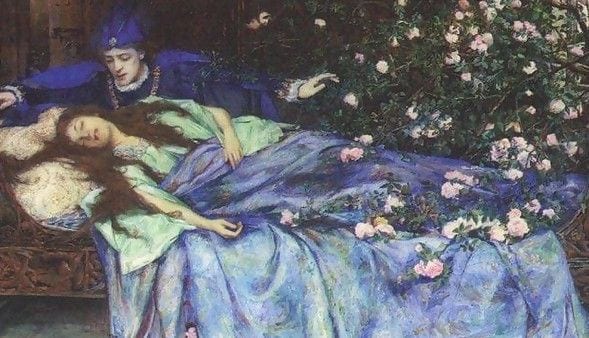
Talia wakes up, takes her babies and goes to the king’s castle and becomes his mistress. Did we mention he was married? Did we also mentioned the king threw her in a pit of fire when, in her furious rage, tried to kill Talia and her babies? Yup, the king kills his first wife, marries Talia and lives “happily ever after.” How about that!?
 It's All Fucked Shirt $22.14 |
 Thalidomide Vintage Ad Shirt $22.14 |
 It's All Fucked Shirt $22.14 |
